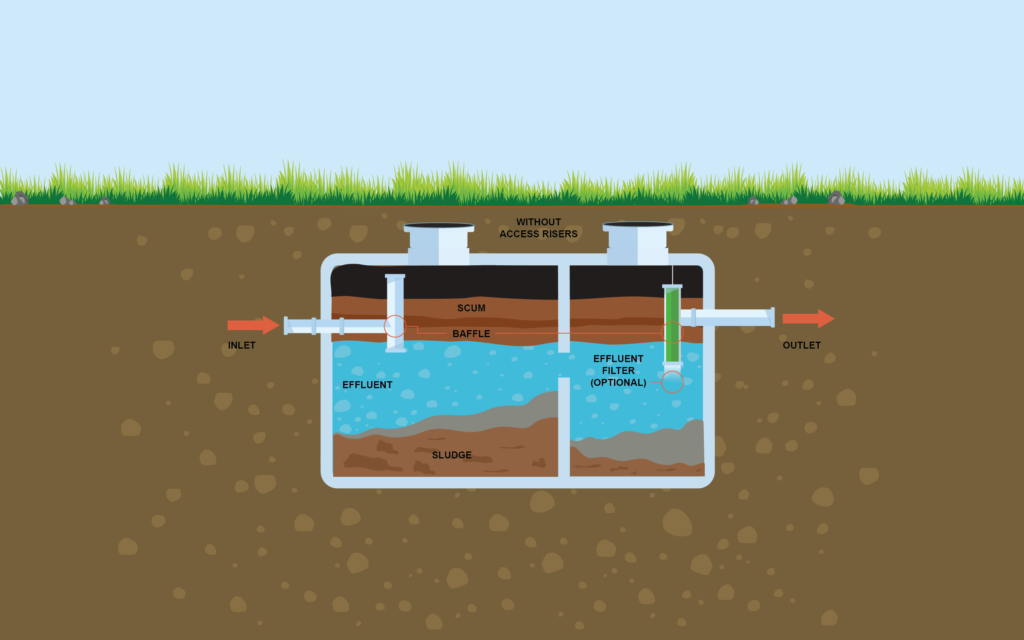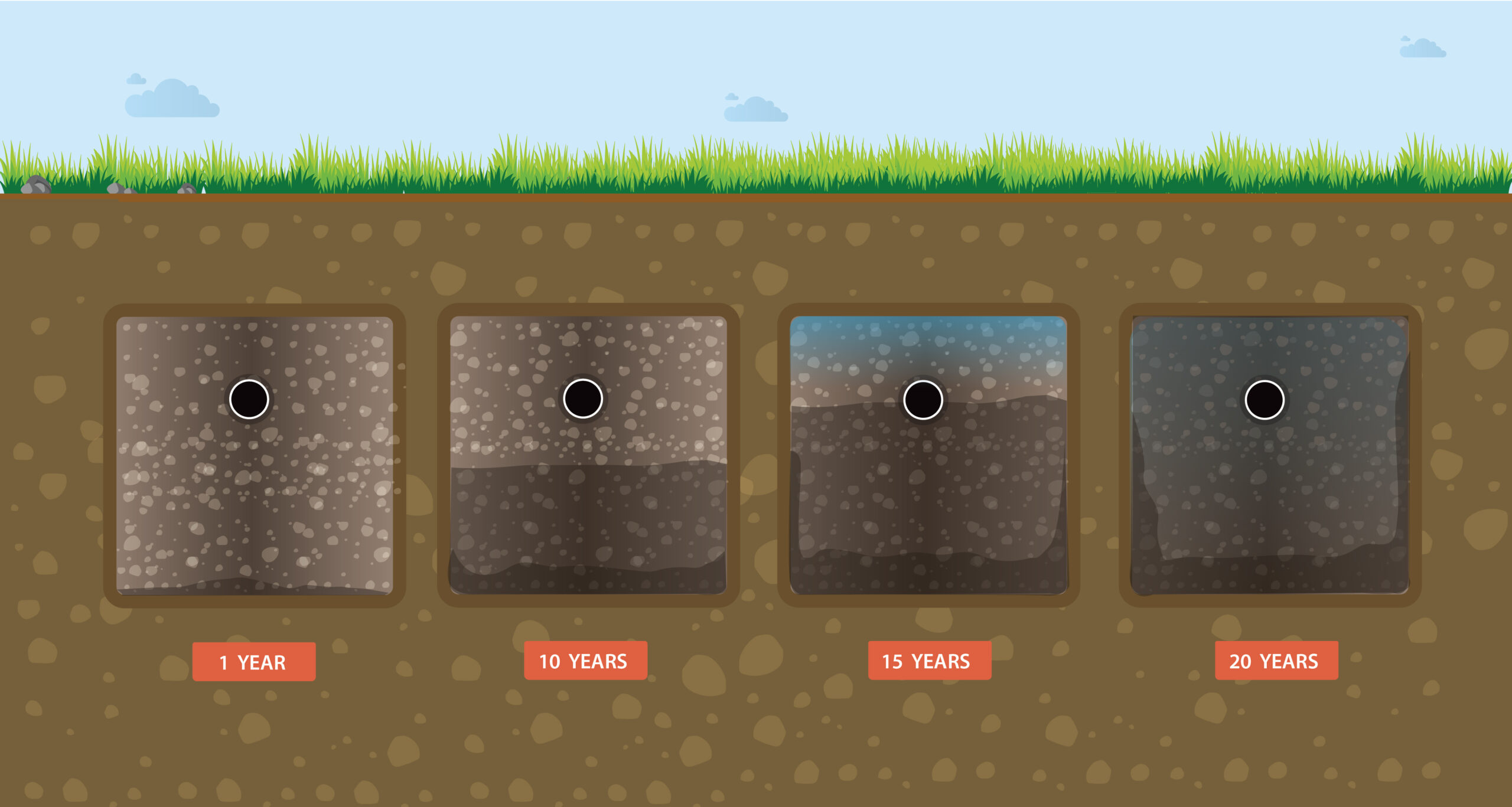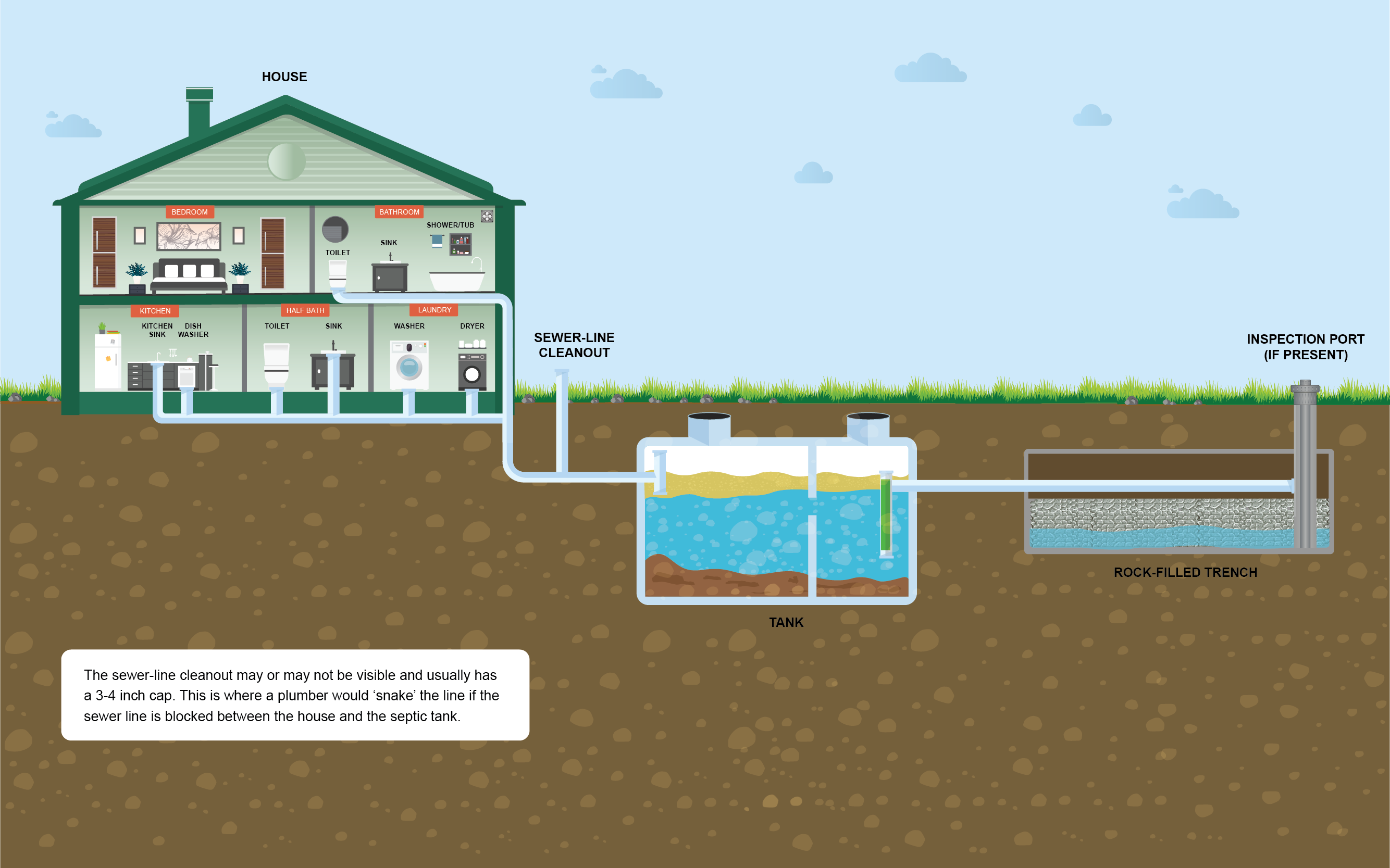If you’re buying a home or maintaining your current one, understanding whether your property is connected to a septic system or a municipal sewer is crucial. In the Central Valley, many homes—especially those in rural areas—use septic tanks, while homes in cities and suburbs are often connected to a public sewer system.
Each system has its own costs, maintenance requirements, and long-term considerations. If you’re unsure which is better for you, this guide will break down the key differences.
How They Work
Septic Systems: A Self-Contained Wastewater Solution
A septic system is an independent wastewater treatment system located on your property. Here’s how it works:

- Wastewater from your home (toilets, sinks, showers, and laundry) flows into a large underground tank.
- Solids settle at the bottom (forming sludge), while lighter materials (like grease) float to the top.
- Effluent (liquid waste) exits the tank into a drain field, where it’s naturally filtered by soil and bacteria.
- Over time, solids accumulate, requiring regular pumping to prevent backups.
✅ Pros:
- No monthly sewer bills
- Environmentally friendly if maintained properly
- Ideal for rural and large-lot properties
❌ Cons:
- Requires pumping every 3-5 years
- Improper maintenance can lead to costly repairs
- Homeowners are responsible for all maintenance
Sewer Systems: A Public Wastewater Solution
Homes connected to a municipal sewer system send wastewater through underground pipes to a central treatment plant. The city or county maintains the system, and homeowners pay a monthly fee.
- All wastewater leaves the home through a main sewer line.
- Sewage travels through public pipelines to a municipal treatment plant.
- The plant treats and processes the waste before releasing clean water into the environment.
✅ Pros:
- Less homeowner maintenance
- No risk of septic backups or drain field failure
- Usually better suited for small lots
❌ Cons:
- Monthly sewer fees (which can increase over time)
- Repairs to the main sewer line on your property are your responsibility
- Can be costly to connect a home that currently has a septic system
Which Is More Common in the Central Valley?
In urban areas like Fresno, Clovis, and Bakersfield, most homes are connected to city sewer systems. However, many rural homes and agricultural properties still rely on septic systems due to the large lot sizes and lack of nearby sewer infrastructure.
If you’re looking to buy a home in the Central Valley, always ask:
- Is the home on septic or sewer?
- When was the last septic tank pumping or sewer inspection?
- Are there any known issues with the system?
Cost Comparison: Which Is Cheaper?
Upfront Costs
- Septic System: Installation costs between $5,000 – $15,000+, depending on soil conditions and system type.
- Sewer Connection: If your property is near a sewer line, hook-up fees can range from $3,000 – $10,000. Some areas may charge impact fees that add to the cost.
Ongoing Costs
- Septic Tank: Pumping costs between $300 – $600 every few years, with occasional maintenance expenses.
- Sewer Bill: Monthly fees range from $30 – $100+ in many Central Valley cities.
Long-Term Costs
- Septic Systems: Can last 20-40 years with proper care, but drain fields may eventually fail, requiring expensive replacements.
- Sewer Systems: Homeowners may need to repair or replace sewer lines on their property, which can cost thousands of dollars.
Which is cheaper overall?
- If well-maintained, a septic system can be more cost-effective over several decades compared to ongoing sewer bills.
- However, if a septic system fails and requires a new drain field, costs can quickly exceed what you’d pay for sewer service.
Maintenance: What You Need to Know
Septic System Maintenance
To keep your septic system in good shape:
✔️ Pump the tank every 3-5 years (more frequently for large households).
✔️ Watch what you flush—avoid wipes, grease, and harsh chemicals.
✔️ Conserve water to prevent overloading the system.
✔️ Keep heavy vehicles, patios, and structures away from the drain field.
Sewer System Maintenance
✔️ Homeowners should have their main sewer line inspected every few years.
✔️ Avoid flushing items that could cause clogs.
✔️ Know where your sewer cleanout is located in case of a backup.
✔️ If you experience frequent blockages, consider a professional hydro-jetting service.
Switching from Septic to Sewer: Is It Worth It?
Some homeowners consider switching from septic to sewer, but it’s not always practical.
Pros of Converting to Sewer:
- No more septic maintenance
- May increase property value in urban areas
- Removes risk of septic system failure
Cons:
- Expensive installation (especially if sewer lines aren’t nearby)
- Some properties may require a lift station (a pump system)
- You’ll start paying monthly sewer fees
💡 Tip: If you’re considering switching, check with your local public works department to get cost estimates.
Which System Is Best for You?
📍 If you live in a rural area or own a large property → Septic is often the best choice.
📍 If your city offers a reliable sewer system → Connecting to sewer is more convenient.
📍 If your septic system is failing and repair costs are high → Sewer may be worth considering.
Final Thoughts
Whether you have a septic tank or a sewer connection, proper maintenance is key to avoiding costly problems. If you own a septic system in the Central Valley, keeping up with regular pumping and inspections will help your system last for decades.
🔧 Need septic pumping or advice? Call Sequoia Pumping LLC at (559) 233-2400 today!




